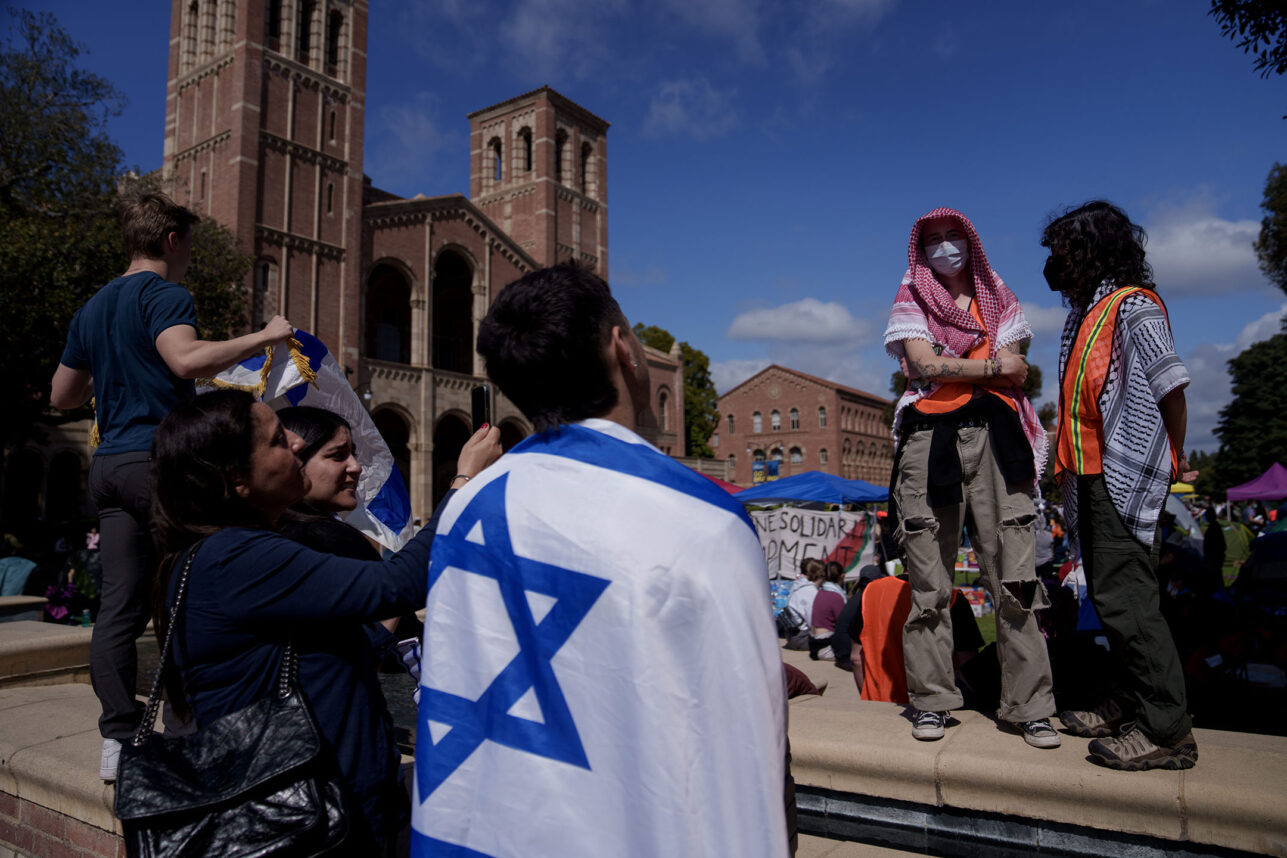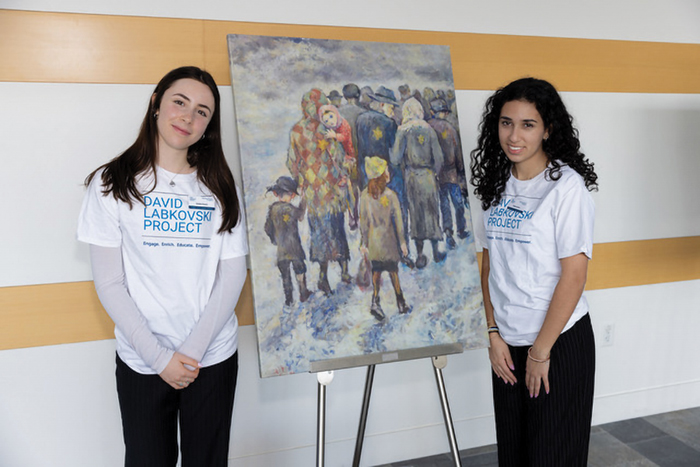Weekday mornings at 8:20, Judy Penso sets out for her office at a Jewish Community Center just outside San Francisco, where she runs the Marin County region of the Bay Area Jewish Community Relations Council.
Before heading across the bridge from her Berkeley home, though, she drops off her 15-month-old daughter, Amalya, at a neighborhood day-care center run by Christian fundamentalists. There’s good day care at the JCC, but Penso can’t afford it. Not on the salary she gets from the Jewish community.
“I love my work,” says Penso, a single mother whose salary is “in the mid-40s.” “I’ve committed my life to working for the Jewish community — my education, my professional career. I’m not looking elsewhere. But I did assume that working for the community, I’d be able to enjoy the community’s programs and services like anybody else — day care, day school and so on. It turns out that’s out of my reach.”
Shockingly, Penso isn’t unusual. Jewish community workers nationwide say they can’t afford many of the services of the community they serve. Jewish life is too often for the affluent, and that’s something Jewish communal workers aren’t.
“The community generally ignores these class issues,” says Yehudit Moch, a New York specialist in Jewish family education.
Moch herself sends son Samuel, 11, to public school because she can’t afford day school on her $30,000 annual salary. “I’m a Jewish family educator who’s unable to afford my own son’s education,” she says bitterly. “It’s humiliating.”
The problem isn’t only among communal workers. Across the country, many ordinary Jews — some say most — can’t afford basic Jewish services. “Tremendous numbers of people are totally left out because of it,” says Moch.
The math is straightforward. “You could take a family of four with an income of $75,000 as typical,” says sociologist Gary Tobin, president of the San Francisco-based Institute for Jewish and Community Research. “Knock off 30 percent for taxes, take off another 25 percent for housing, and they’re left with about $30,000. Day school averages $8,000 to $10,000 a year per kid. Synagogue dues average about $1,000. Sending the kids to camp costs at least $1,500 each. If you belong to the JCC, that’s probably another $1,000. You have now exhausted the family’s income, and that’s before they buy food, clothing and drive a car. And let’s not even talk about the extra cost of kosher meat.”
According to a 1992 study by the American Jewish Committee, the cost of living a fully engaged Jewish life — including synagogue and JCC membership, day school, summer camp and a modest UJA gift — was between $18,000 and $25,000 per year for a family of four, based on 1988 figures. To afford it, the AJC calculated, a family would need an annual income of $80,000 to $125,000, depending on region. That was beyond the means of some 90 percent of the Jewish families in America.
The implications are staggering. Despite widespread anxiety over low rates of Jewish participation, the basics of Jewish life are priced beyond the reach of most Jews. “I’m convinced that the high cost of Jewish living is one reason for the low rate of Jewish affiliation,” says Rabbi Ira Youdovin, executive vice president of the Chicago Board of Rabbis.
Some manage despite the difficulty. Daniela Davis (not her real name), a Los Angeles widow, supports her two teen-age daughters on her $60,000 salary as a government attorney. She brings home $43,000 after taxes. She sends the girls to an Orthodox Jewish day school — combined tuition $16,000 — “because I’m committed to it, so I don’t have any options. But, sometimes, it leaves me feeling frightened and despairing.”
Outside the Orthodox community, though, few feel that deep a commitment. Most look at the price tag and walk on.
And day schools aren’t the only barrier to Jewish participation. Those who’ve studied it say the most frequent cause of Jewish sticker-shock is the synagogue, the institution most Jews consider their primary link to Judaism.
“Synagogue dues are both a financial barrier and a psychological barrier,” says sociologist Tobin. “Especially for Jews in the 18 to 30 age range, which is the generation everyone is worrying about. A sizable group finds it objectionable on principle that they have to ‘pay to pray’ — that’s the phrase they often use.”
Others don’t feel the need. Yitzhak and Leslie Mizrahi, a dual-income Long Island couple, recently quit their synagogue, concluding that they weren’t “taking advantage” of it. “We found a place that offers High Holy Day services for free,” says Leslie. “That’s all we needed. And it was quite expensive.”
Community leaders insist that synagogues are more accommodating than people realize. “I don’t know of any synagogue that turns people away because of money,” says Rabbi Ellen Nemhauser, Philadelphia regional director of the Union of American Hebrew Congregations. “Every congregation has some form of dues relief. Nobody who wants to join a synagogue is kept out.”
Trouble is, most Jews aren’t sure what they want. Confronted with a price tag at the outset, many don’t bother looking further. Even when they do, says Tobin, “many would rather not go through the humiliating process of demonstrating that they’re needy in order to join a synagogue. It becomes a life choice they’re not willing to make.”
Some synagogues are now working to entice newcomers, hoping shul-going becomes a habit. In Chicago, five synagogues and a JCC along the affluent Gold Coast banded together in 1996 to offer under-30s a two-year introductory package for just $150. In Philadelphia, the federation runs a free year-long program that introduces first-timers to community life. A synagogue in San Francisco, Temple Emanuel, simply offers a year’s membership free to first-timers.
Studies suggest that the introductory packages, well marketed, attract fair numbers. About half stay on to become dues-paying members.
The other half wanders off, though, often citing cost. “It really does prevent those with low and marginal incomes from joining,” says Tobin.
The solution? It’s painfully obvious: money. Money to pay teachers’ salaries and reduce school tuitions. Money to pay synagogue heating bills and offer lower dues. Lots of money. Plus a new readiness by federations, synagogues and JCCs to cooperate and pool resources. “Some people are talking about a parish model for American Judaism,” says Chicago’s Youdovin. “The idea is that one low fee buys you membership in all the community’s institutions. It works in Europe.”
“The bottom line,” says Tobin, “is that for all the talk of Jewish continuity and renaissance, it’s not going anywhere until we start seriously addressing subsidies. We’re going to need billions and billions of dollars to subsidize this renaissance.”
J.J. Goldberg writes a weekly column for The Jewish Journal.





















 More news and opinions than at a Shabbat dinner, right in your inbox.
More news and opinions than at a Shabbat dinner, right in your inbox.